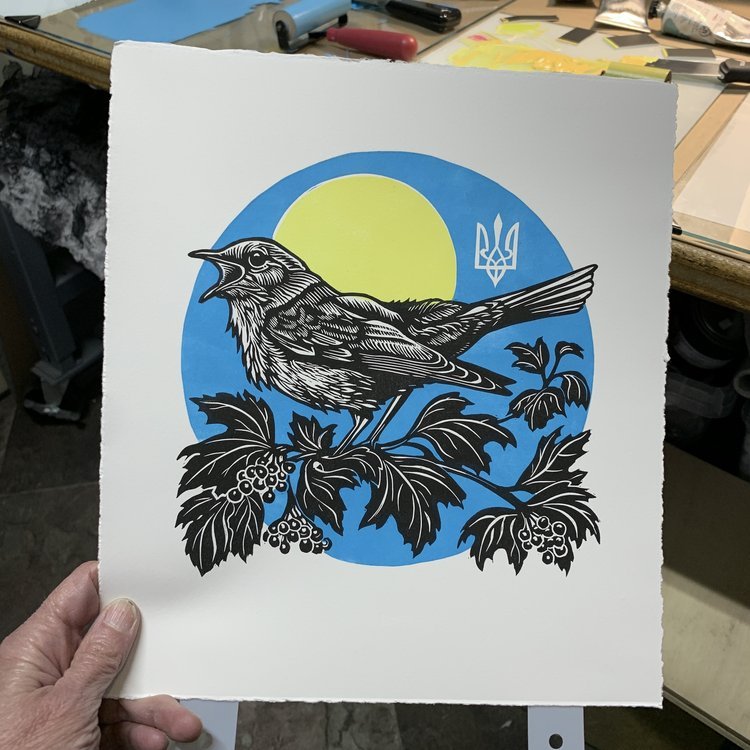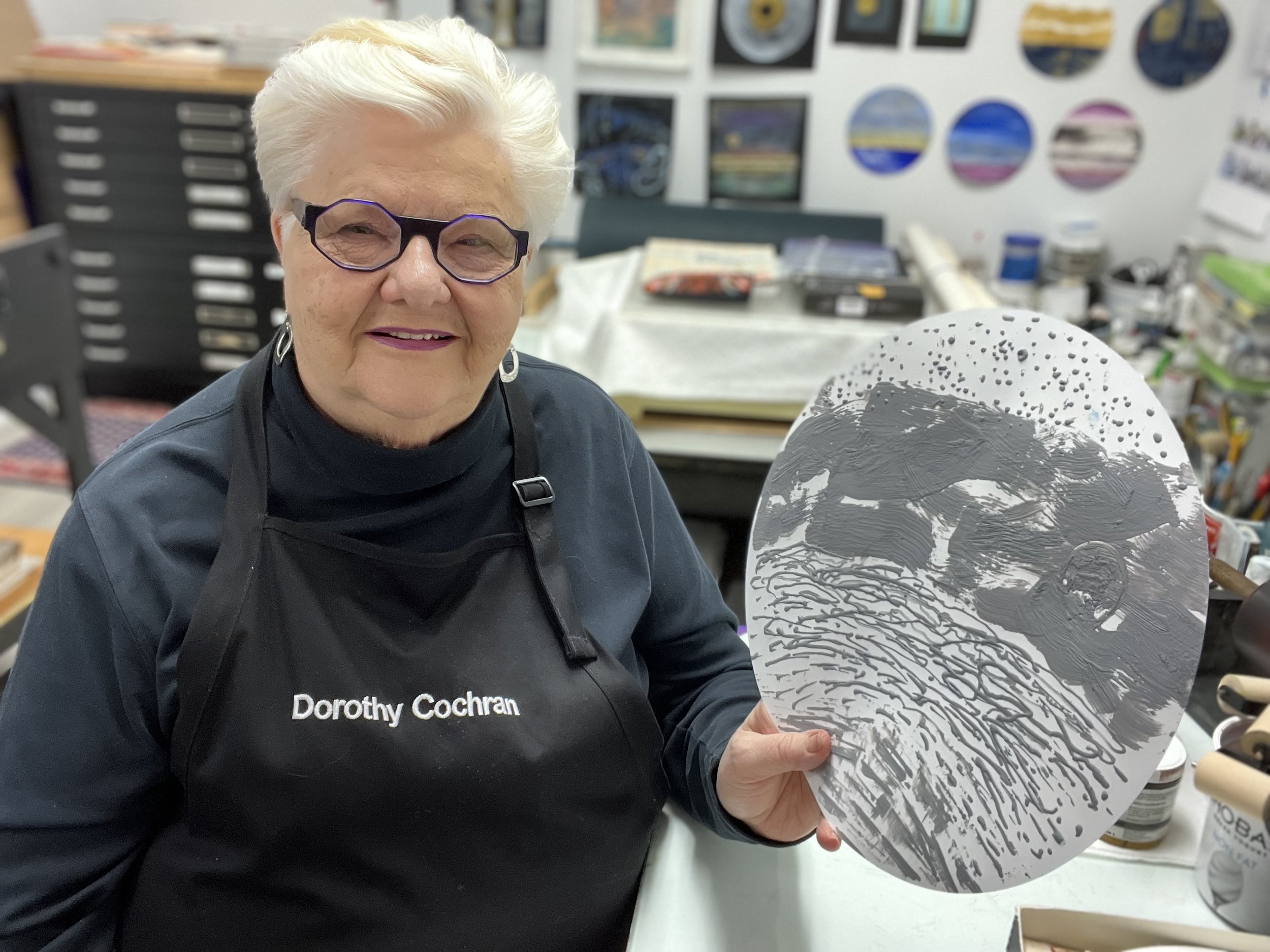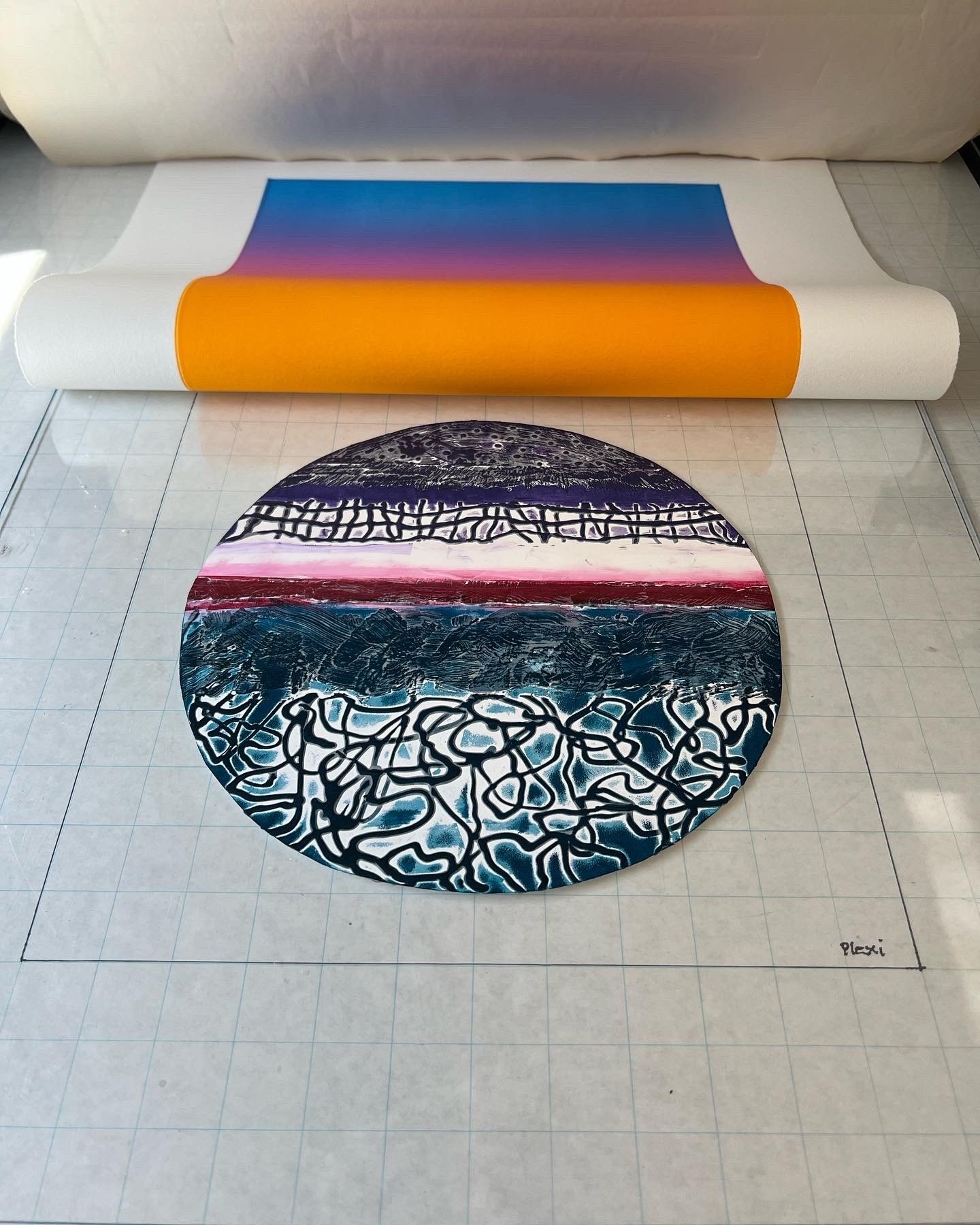Kathryn Anderson is a printmaking artist living and creating in Washington State in the US. She derives much inspiration from the beautiful Pacific Northwest region. Her work reflects her love for the natural world and her connections to the animals who inhabit it.Birds, forests, myth, and magic are often recurring themes in her work.
How did you come across Somerset?
{KA} There is a wonderful community of artists on Instagram! I have come to know the work of so many talented printmakers all over the world. I have found that printmakers are very kind and willing to share their knowledge about how they create their beautiful work and are quite patient about responding to my questions.
Among the artists whose work I truly admire, and I’ve often found that Somerset paper was a recurring theme of their successful work. Once I tried Somerset papers with my linocut prints and etchings I was hooked!
What qualities does Somerset have that works with your techniques?
{KA} Somerset papers are consistently perfect. The quality is exceptional, and the range of colors and textures allows me to use Somerset paper with both linocut prints and etchings. I can confidently know that my editions will be archival, consistent, and clean.
Somerset Satin is sized perfectly for linocut, and the Somerset velvet and textured papers can be dampened to work beautifully for etchings while yielding sharp fine details.
What is your favorite type of Somerset and why?
{KA} I use Somerset Satin paper exclusively for creating linocut prints. I’ve tried lots of other papers and Somerset Satin is far and away my favorite. The delicious smoothness of the surface is the perfect receptor for the ink and yields wonderfully sharp, clean prints. I love the weight of the paper too; it is strong and stable.
I teach linocut classes and I provide Somerset Satin paper for my students. There are a lot of variables that affect the print quality, but by starting them off with the best paper, their first experience with linocut printing is a positive one with great outcomes!
What is your process like?
Linocut
ETCHING
Watch Kathy’s Aquatint Process.



















